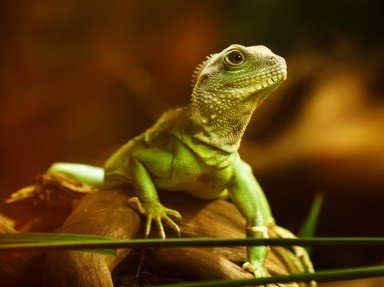Quiz Answer Key and Fun Facts
1. Representing Australia is this handsome fellow, with the scientific name of Pogona barbata. By what common name is it known?
2. The panther chameleon, Furcifer pardalis, is native to which island nation, renowned for the variety of its wildlife?
3. One of only a few reptiles which are native to the UK, which legless lizard has a name which suggests it is a different creature?
4. The large lizards commonly called the tegu are native to which continent?
5. The common basilisk is also known by which Biblical name?
6. The world's largest lizard, the Komodo dragon, is found in Indonesia, specifically in which island chain?
7. These wall lizards can be found all over the islands of the Greek archipelago. Armed with this information, which of these would be their common name?
8. The Viviparous, or common, lizard can be found as far north as the Arctic Circle.
9. This lizard, the largest found in Africa, is a member of the monitor family. It is named for which well known river?
10. Plestiodon fasciatus is a skink native to North America. Its common name comes from its body markings, and is which of these?
Source: Author
rossian
This quiz was reviewed by FunTrivia editor
Tizzabelle before going online.
Any errors found in FunTrivia content are routinely corrected through our feedback system.

